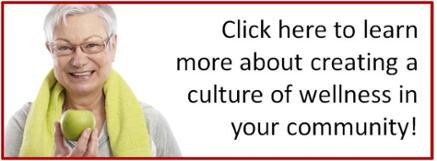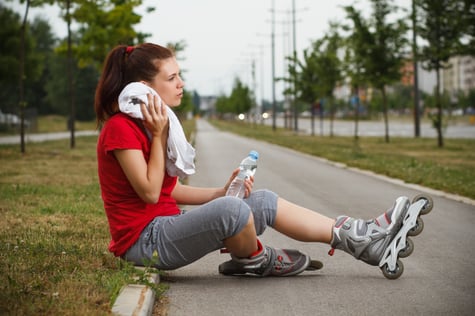.jpg?width=385&name=GettyImages-482817556%20(1).jpg) The more we age, the less we move, and the more we start to take our health for granted, especially if we have been “healthy” for most of our lives. We often hear about the need to exercise more as we get older, but what about the nutrition aspect? Eating healthy foods is just as important as exercising. There are some good practices and tricks to maintaining a healthy diet and exercising plan as we age.
The more we age, the less we move, and the more we start to take our health for granted, especially if we have been “healthy” for most of our lives. We often hear about the need to exercise more as we get older, but what about the nutrition aspect? Eating healthy foods is just as important as exercising. There are some good practices and tricks to maintaining a healthy diet and exercising plan as we age.
Why Healthy Eating Is Important
The first thing you must understand is why it is so important to eat healthier as you age. The number-one benefit is lowering risk of having chronic diseases such as cancer, heart conditions, diabetes, and bone disorders. Exercising and healthy eating work together, especially when talking about weight management.
Everyone Is Different
Individuality is a key component, and it’s very touchy when talking about exercise and the nutrition that goes with that because everyone responds to certain foods and exercise differently. Talking to a medical professional about a healthy weight based on age is a good starting point.
Choosing the Right Foods
The best and worst part of nutrition is deciding what foods to eat and which ones you will need to avoid from now on. The more we age, the more our plates should look like a salad bowl rather than an egg carton. Foods such as fruits, vegetables, whole grains, fat-free or low-fat milk, seafood, and lean meats are all good food sources to consider when taking a better approach to healthy eating. Avoid foods that contain a lot of sugar, salt, and butter, and fewer nutrients.
Portion Control
Before thinking about a healthy exercise plan, understand that you do not need to eat as much as you did when you were younger. Portion control is very real and can be the deciding factor when it comes to gaining or losing weight. Tips for avoiding overeating include
- Don’t let yourself be distracted by entertainment and lose track of how much you’re eating.
- Read about the nutritional facts on food labels.
- Once you are full, stop eating.
- Avoid going out to eat because restaurants give more food than they should.
- Try to cook meals at home that look like a salad bowl.
- Store leftovers in the fridge before you make plates.
Evaluate Your Physical Activity Needs and Find an Activity You Like
Aging happens every day, so take a step back and evaluate what needs your body has when it comes to physical activity. The first step of being active is talking to a physician about precautions you should take, especially if it has been a while since your last physical activity session. Aerobic endurance, resistance training, and balance should be the focus when it comes to being active and aging. The ACSM guidelines for adults and aerobic endurance is at least 150 minutes of moderate activity. Older adults should strive for at least 2 days of strengthening their muscles, and they should practice improvements on balance at least 3 days a week.
Physical activity does not have to be in a fitness center; finding something to enjoy is the key, such as corn toss, pickleball, shuffleboard, water aerobics, Tai Chi, yoga, or pool volleyball. Of course a balance class also helps meet goals for active older adults who are driven to exercise.
Aging can be challenging and unpredictable, but with both healthy eating and exercise, it can be easier and more fun.


 As the Wellness Coordinator at NIFS, I get to meet a lot of great clients and help them attain their nutritional goals. I have noticed some common weight-loss questions that arise during the sessions. Hopefully if you have been wondering the same things, these answers will give you some more insight.
As the Wellness Coordinator at NIFS, I get to meet a lot of great clients and help them attain their nutritional goals. I have noticed some common weight-loss questions that arise during the sessions. Hopefully if you have been wondering the same things, these answers will give you some more insight.
 The biggest change, however, is the fact that you no longer have to think about what’s for dinner, or lunch, or even breakfast. What a joy! My husband and I have the same exact conversation every day at around 5:30pm: What’s for dinner? I don’t know. What do you want? I don’t care. What do we have lying around that I can toss together quickly? I don’t know, eggs, a salad? And we end up usually having a salad, maybe with an omelet. Easy, but sooo boring.
The biggest change, however, is the fact that you no longer have to think about what’s for dinner, or lunch, or even breakfast. What a joy! My husband and I have the same exact conversation every day at around 5:30pm: What’s for dinner? I don’t know. What do you want? I don’t care. What do we have lying around that I can toss together quickly? I don’t know, eggs, a salad? And we end up usually having a salad, maybe with an omelet. Easy, but sooo boring.
 According to a study published in the
According to a study published in the 


 I actually witnessed my brother order a large hamburger with a fried egg on top. It was like Man v. Food! I’m pretty sure that’s not what they are talking about when I read articles about eggs helping you lose weight.
I actually witnessed my brother order a large hamburger with a fried egg on top. It was like Man v. Food! I’m pretty sure that’s not what they are talking about when I read articles about eggs helping you lose weight. We have all heard the phrase that an apple a day keeps the doctor away, but who knew that eating a balanced diet would also make you more productive at work? That is what a recent study found.
We have all heard the phrase that an apple a day keeps the doctor away, but who knew that eating a balanced diet would also make you more productive at work? That is what a recent study found. The puzzle pieces of successful weight loss or maintenance are not limited to gym visits. They include healthy eating habits as well. Adopting a nutritious diet can seem daunting, so making small changes that add up is often an effective strategy.
The puzzle pieces of successful weight loss or maintenance are not limited to gym visits. They include healthy eating habits as well. Adopting a nutritious diet can seem daunting, so making small changes that add up is often an effective strategy. Slow and steady. These are the two words that participants in the Pound Plunge, Richmond Wellness Center’s weight-loss contest, frequently hear from me as I coach them through eight weeks of total body transformation. To the dismay of many, weight loss is not an instant process. Many wish they could achieve their ideal weight in only a couple of days, but
Slow and steady. These are the two words that participants in the Pound Plunge, Richmond Wellness Center’s weight-loss contest, frequently hear from me as I coach them through eight weeks of total body transformation. To the dismay of many, weight loss is not an instant process. Many wish they could achieve their ideal weight in only a couple of days, but  Your joints play an important role in all of life’s activities. They connect bone to bone, which allows your body to move during everything from sports and exercise to everyday functions such as playing with kids, lifting groceries, performing yard work, and even sitting at a desk.
Your joints play an important role in all of life’s activities. They connect bone to bone, which allows your body to move during everything from sports and exercise to everyday functions such as playing with kids, lifting groceries, performing yard work, and even sitting at a desk.